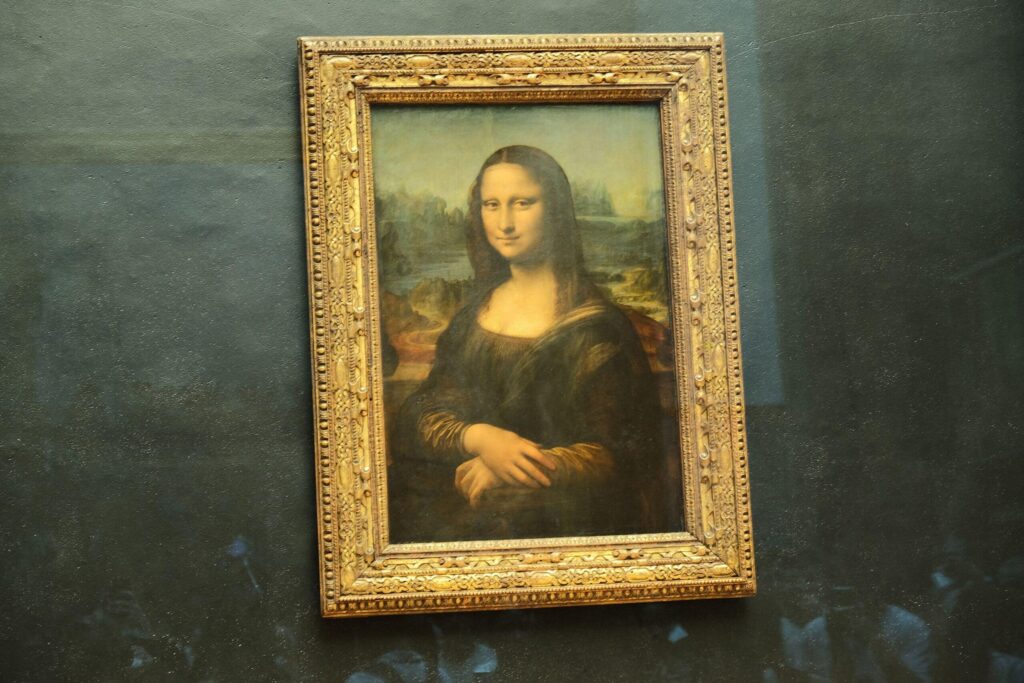The famous “Mona Lisa” has again come under attack, this time from climate activists as a show of solidarity with the French farmers’ protests against the government for better living conditions.
The expensive and mysterious art piece created by Leonardo da Vinci is one of the biggest tourist attractions at the Louvre Museum in Paris. It has been targeted multiple times in the past, the most recent being in 2022.
Protestors Threw Canned Soup At The ‘Mona Lisa’
The two climate activists involved in the demonstration pierced through trooping tourists at the Louvre museum on Sunday to carry out their mission on the “Mona Lisa.” In a viral video on X, the women were seen throwing canned soup at the piece before bypassing the wooden enclosure, restricting access to the art section.
Upon entry, one of the women removed her jacket to reveal a white shirt with the inscription “Riposte Alimentaire” written boldly in front. The French word for “food response” belonged to a food sustainability activist group.
Her partner also joined the demonstration as she shouted to the crowd, “What is more important, Art or healthy sustainable food?” before museum workers soon rushed to stop people from capturing the shocking incident.
ALERTE – Des militantes pour le climat jettent de la soupe sur le tableau de La Joconde au musée du Louvre. @CLPRESSFR pic.twitter.com/Aa7gavRRc4
— CLPRESS / Agence de presse (@CLPRESSFR) January 28, 2024
The Riposte Alimentaire has accused the French government of breaking its climate commitment and demanded that the equivalent of France’s state-funded health care system be established so people can access healthy food and also enable decent housing for farmers.
However, despite the proximity of the act, NBC News confirmed from the museum’s management that no damage was recorded and that the piece has been lying safely behind the armored glass since 2005.
The email statement added that the “Salle des Etats,” where the painting stood, was closed for about 90 minutes as workers cleaned the affected area and led people out.
In 2022, an activist attacked the piece by smearing a cake on the frame while shouting: “Artists tell you: Think of the Earth. That’s why I did this.” Farmers in France have also planned to converge in Paris on Monday with threats to block all the major roads leading to the capital.
Galleries have become the perfect avenue for protestors to draw attention to climate issues, and the Louvre, housing the “Mona Lisa,” records over 10 million visitors annually.
The “Sunflowers” by Van Gogh in the National Gallery in Trafalgar Square London also faced a similar “soup attack” from “Just Stop Oil” activists who tried to pressure the U.K. government into dropping its plans to renew their oil and gas license.
Mystery Behind The ‘Mona Lisa’ Uncovered
The attacks on the Mona Lisa can also be connected to its rich pedigree, from the creator to the controversial identity of Mona Lisa herself, which has piqued the curiosity of many art lovers for decades now.
However, a significant break was made by the historian Silvano Vinceti, who carefully observed the landscape behind the “Mona Lisa.”
The Blast shared that Vinceti discovered a bridge behind Mona Lisa’s left shoulder and compared it to previous historical documents and drone pictures. In his conclusion, the bridge was the Romito di Laterina, which still has its existing remnants in Arezzo’s province in Southern Florence, Italy.
Other groups suggested the bridge could also pass for the Buriano Bridge in Southern Florence, which stands very close to the Romito di Laterina Bridge, or the Bobbio Bridge north of Genes in Italy.
To buttress his point, Vinceti argued that Da Vinci lived in Valdarno while painting the “Mona Lisa,” meaning he used the Romito di Laterina on his journeys.
Despite Vinceti’s discovery, many unanswered questions still hover around details in the painting, like the river, which was once confirmed to be the Arno because of its shape.
Another mystery about Mona Lisa is the woman’s actual identity, which artist Giorgio Vasari claimed to be Lisa del Gioncondo, the wife of Francesco di Bartolomeo del Giocono of Florentine.
The name also coincides with the second title of the painting, “La Gionconda,” but was not enough to convince Sigmund Freud, who opined that the model was Caterina, Da Vinci’s mother.
He argued that Mona Lisa’s tricky smile originated from a faint memory of Caterina’s smile. However, another sect has stated that the painting was simply Da Vinci himself but represented by a woman, thanks to the similarity in their facial expressions.

